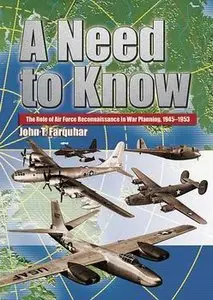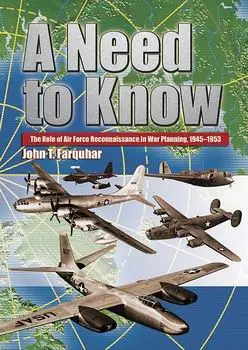A Need to Know - The Role of Air Force Reconnaissance in War Planning, 1945–1953
Air University Press | 2004 | ISBN: 1585661244 | English | 234 pages | PDF | 3.7 MB
On 1 April 2001, a US Navy EP-3 Aries II surveillance aircraft collided with a People’s Liberation Army Air Force J-8 fighter plane that resulted in the loss of the Chinese pilot and an emergency landing on Hainan Island by the Navy plane. The Chinese government’s 11-day internment of the Navy flight crew shocked and amazed the American public. The ensuing diplomatic crisis and war of words reminded many of similar incidents from the supposedly defunct Cold War. Depending on the age of the individual, the EP-3 crisis evoked memories of the 1983 Soviet shoot-down of Korean Air Lines (KAL) flight 007 or Francis Gary Powers’s ill-fated U-2 mission of 1 May 1960. Avid readers might remember a 1993 U.S. News & World Report issue devoted to “America’s Top-Secret Spy War” that chronicled many of the 35 US Air Force and US Navy reconnaissance aircraft shot down from 1946 to 1961 with the loss of over 100 American airmen.1 The April 2001 collision focused world attention upon a still little known but highly significant aspect of the Cold War—strategic aerial reconnaissance. The vehement charges and countercharges surrounding the EP-3 incident evoked similar periods of international tension involving US reconnaissance aircraft during the early years of the Cold War. For example, the KAL 007 shoot-down plunged Soviet-American relations into an icy phase of the latter Cold War, and the infamous U-2 incident aborted a promising 1960 US President Eisenhower–Soviet Premier Khrushchev summit. In the short term, the EP-3 incident resurrected a sense of hostility associated with a series of international incidents occurring in the early 1950s. To assess the apparent impact of aerial reconnaissance upon the early Cold War, many questions must be answered: How and when did reconnaissance flights originate? What factors prompted US reconnaissance operations? Who authorized them? At what point did the president and senior policy makers know about the activities? What information did US policy makers seek that could be provided by aerial reconnaissance? Why did leaders risk international incidents, political turmoil, and potential hostilities to gather information?



